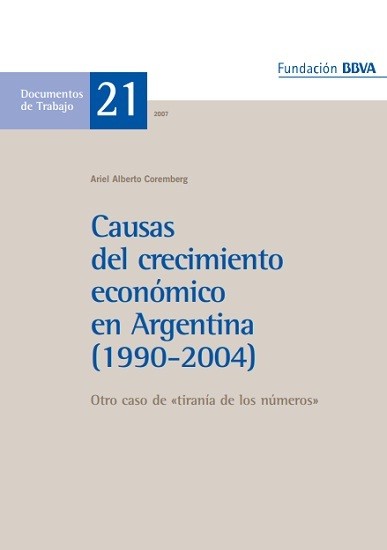
PublicationWorking Papers
Causas del crecimiento económico en Argentina (1990-2004)
Otro caso de "tiranía de los números"
The purpose of this working paper is to analyse the main causes of economic growth in Argentina during the 1990-2004 period. This research proposes a methodology in order to identify Total Factor Productivity (TFP) gains in the strict sense of positive shifts in the production function, independent from short run cyclical fluctuations in the utilization of productive factors and relative prices effects; distinguishing it from residual or apparent TFP which expresses a phenomenon of real cost changes but not necessarily changes in long-run economic growth.
The main resultsof this research are the following: strict TFP has less pro-cyclical behaviour and a lower trend than apparent TFP. Similar conclusions are obtained in the case of labour productivity adjusted for labour intensity. Argentina sustained a prolonged period of economic growth over 1990-2004, biased to capital accumulation and utilization during the 1990s, and based on labour input demand after the devaluation year of 2002. These results for Argentina are analogous to the evidence found by Young (1995) and Timmer and Van Ark (2000) for the experience of the SE Asian NICs. Some doubts arise about the capacity of the Argentine economy to generate the necessary productivity gains, in the strict sense, to support sustainable long-term economic growth.
